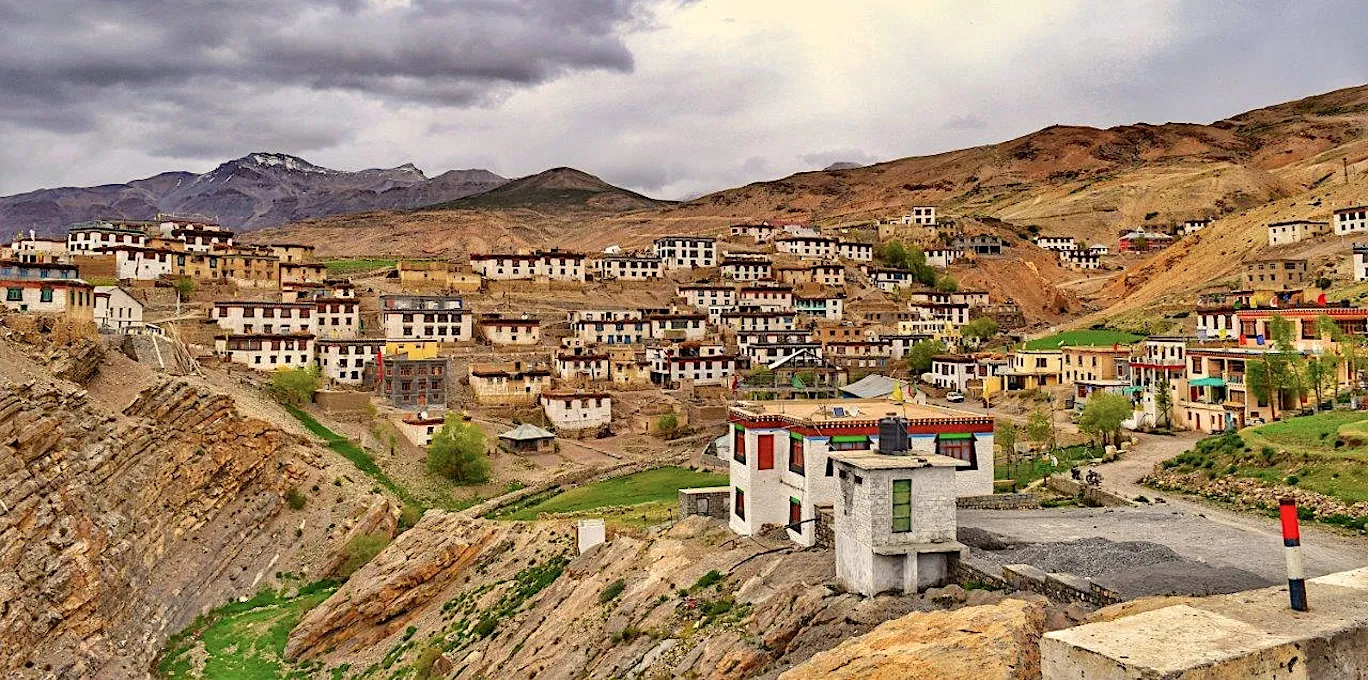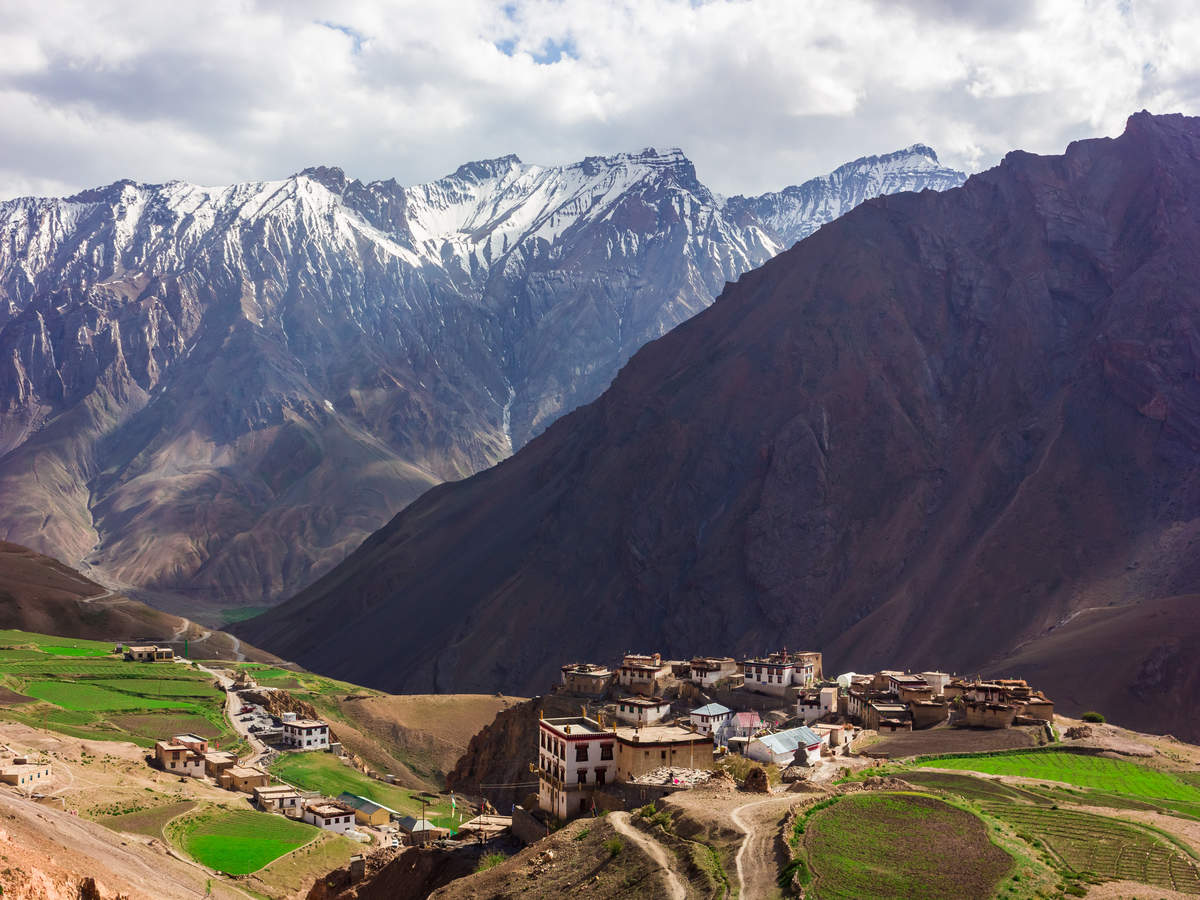Kibber
Published on March 28, 2025
Nestled high in the Himalayas, Kibber is a village that feels like it belongs to another world. Located at an elevation of approximately 4,270 meters (14,000 feet), this remote settlement holds the distinction of being one of the highest motorable villages in the world . Surrounded by barren mountains, glacial streams, and endless stretches of wilderness, Kibber offers a surreal escape for travelers seeking adventure, spirituality, and tranquility.
The journey to Kibber Village is as breathtaking as the destination itself. Winding roads through treacherous mountain passes like Kunzum La create a sense of anticipation and wonder. As you approach Kibber, the stark beauty of the desert-like terrain, dotted with traditional mud-brick houses and fluttering prayer flags, greets you with its raw charm. Known for its unspoiled landscapes and rich Buddhist heritage, Kibber has remained relatively untouched by commercial tourism, making it a haven for those who crave authenticity over convenience. Let’s delve deeper into what makes Kibber such a remarkable destination and why it deserves a spot on every traveler’s bucket list.
The Allure of Kibber: A High-Altitude Paradise
Why Kibber Stands Out Among Himalayan Villages
When it comes to natural splendor, few places can rival the charm of Kibber Village . Situated in the heart of the Spiti Valley, this remote village offers panoramic views of the Greater Himalayas, including majestic peaks like Chaukhamba and Bara Shigri Glacier. The sight of these towering summits, combined with the stark beauty of the valley, creates an atmosphere of awe and reverence.
One of the standout features of Kibber is its vibrant seasonal transformation. In summer, the entire region bursts into life with blooming wildflowers and lush greenery along the riverbanks. Autumn brings crisp air and stunning hues of gold and crimson, while winter transforms Kibber into a snowy wonderland, exuding a surreal charm that feels almost otherworldly.
The Claim to Fame: World’s Highest Motorable Village
Kibber’s most celebrated feature is its status as one of the highest motorable villages in the world , located at an elevation of 4,270 meters (14,000 feet). This distinction draws adventurers, photographers, and curious travelers from across the globe. Reaching Kibber by road is an adventure in itself, as the journey involves navigating narrow mountain roads and crossing high-altitude passes. Despite its remoteness, Kibber is accessible by vehicle, making it a unique destination for those who want to experience the thrill of reaching the "top of the world" without trekking.
The village’s isolation has preserved its pristine environment and traditional way of life. Visitors are often struck by the simplicity and warmth of the locals, who live in harmony with the harsh yet beautiful surroundings.

Iconic Attractions Around Kibber: Must-Visit Highlights
Kibber Monastery: A Spiritual Haven
Perched atop a hill overlooking the village, Kibber Monastery is a sacred site that holds immense spiritual significance for the local community. This centuries-old monastery serves as a hub for Buddhist teachings and rituals, attracting monks, pilgrims, and curious travelers alike. The monastery houses ancient murals, thangkas (Buddhist paintings), and statues of deities, offering a glimpse into the rich cultural heritage of the region.
Surrounded by prayer flags fluttering in the wind, the monastery exudes a serene atmosphere that invites introspection and peace. Visitors are welcome to explore its halls, attend prayer sessions, and interact with the resident monks to learn more about Tibetan Buddhism and its teachings. For many travelers, visiting the Kibber Monastery becomes a transformative experience, leaving them with a deeper understanding of life and spirituality.
Stargazing in Kibber: A Celestial Spectacle
One of the most magical experiences in Kibber is stargazing . Due to its high altitude and minimal light pollution, the village offers some of the clearest night skies in the world. On a clear night, the sky transforms into a canvas of twinkling stars, constellations, and even the Milky Way.
Kibber is a paradise for astronomy enthusiasts and photography lovers. Many travelers bring their telescopes or cameras to capture the breathtaking celestial display. Spending a night under the stars in Kibber is an experience that words fail to describe adequately—it leaves you feeling connected to the universe and humbled by its vastness.
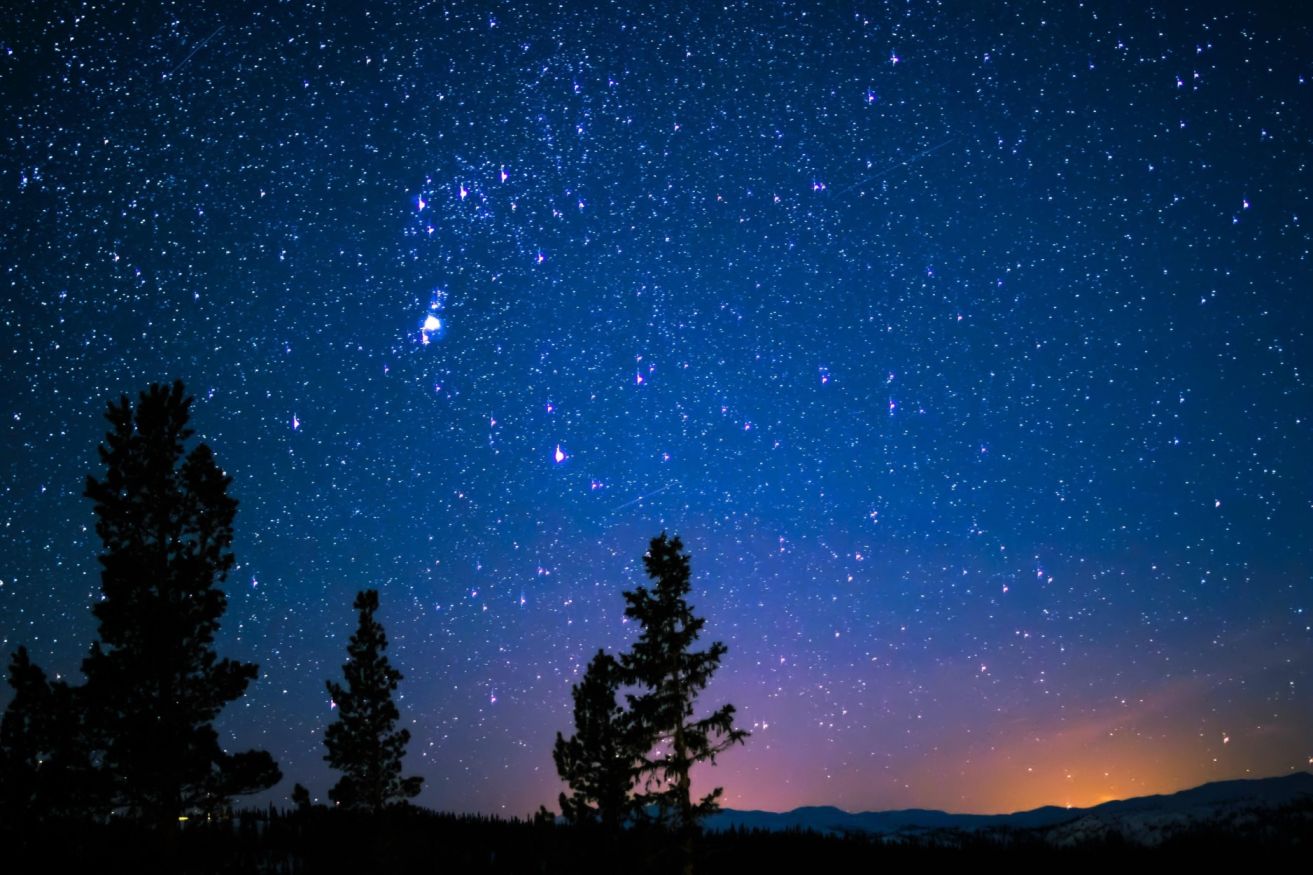
Wildlife Encounters: Snow Leopards and More
Kibber is also renowned for its rich biodiversity, particularly its population of snow leopards , one of the most elusive and endangered species in the world. The surrounding region, including the Pin Valley National Park , serves as a critical habitat for these magnificent creatures. Wildlife enthusiasts often visit Kibber to embark on guided snow leopard safaris, where trained spotters help track these elusive cats in their natural habitat.
In addition to snow leopards, the area is home to other rare species like Himalayan ibex, blue sheep (bharal), and marmots. Birdwatchers will also find plenty to admire, with species like the Himalayan snowcock and golden eagle frequently spotted in the region.
Experiencing Local Life: Culture and Traditions in Kibber
Traditional Architecture: Where Art Meets Nature
One cannot talk about Kibber without marveling at its distinctive architectural style. The village is dotted with traditional mud-brick houses adorned with colorful prayer flags and intricate carvings. These structures are built using locally sourced materials like stone, clay, and wood, ensuring they blend seamlessly with the surrounding environment.
Each house in Kibber tells a story—of resilience, craftsmanship, and community spirit. The flat roofs, designed to withstand heavy snowfall, double as storage spaces for fodder and crops. Inside, cozy interiors feature earthen stoves called bukharis that provide warmth during harsh winters. Exploring these homes offers a rare insight into the daily lives of the villagers, whose hospitality knows no bounds.
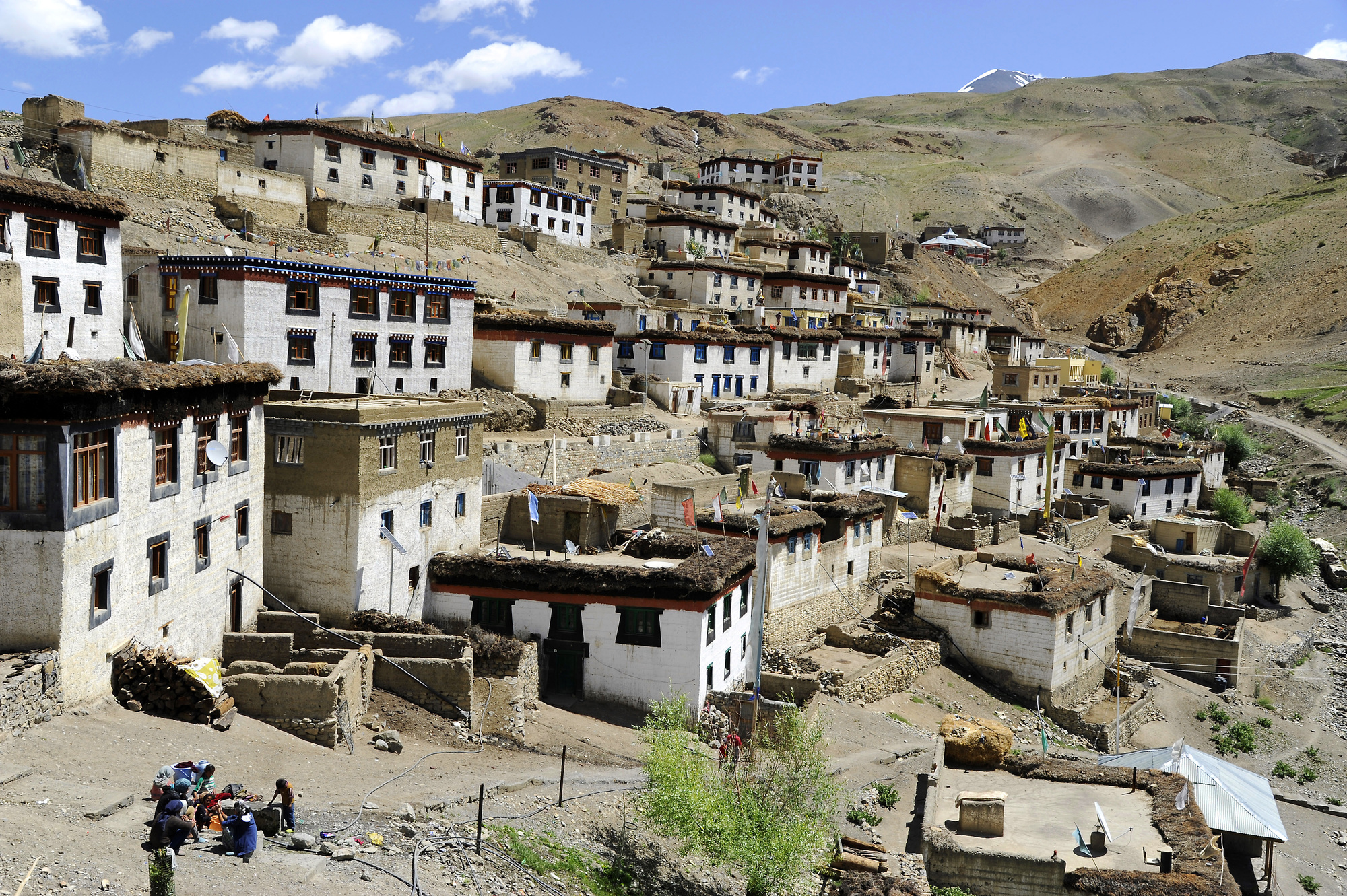
Festivals and Celebrations: Vibrant Reflections of Culture
Life in Kibber revolves around festivals that celebrate nature, agriculture, and spirituality. One of the most significant events is Losar , the Tibetan New Year, which marks the beginning of the agricultural cycle. During this time, the entire village comes alive with music, dance, and elaborate rituals. Locals dress in colorful traditional attire, and monasteries host special prayers to invoke blessings for prosperity.
Another notable festival is Halda , celebrated to honor the deity of fire. Villagers gather around bonfires, chanting hymns and performing folk dances under starlit skies. Participating in these celebrations allows travelers to immerse themselves in the rich tapestry of Spitian culture, forging connections that transcend language barriers.
Local Cuisine: A Taste of Simplicity
No visit to Kibber is complete without savoring its delicious yet simple cuisine. Staple dishes include thukpa (noodle soup), momos (steamed dumplings), and siddu (steamed bread stuffed with walnuts or poppy seeds). These hearty meals are prepared using locally grown ingredients and reflect the resourcefulness of the villagers in adapting to high-altitude living.
Visitors staying at homestays or campsites often have the opportunity to participate in cooking sessions, learning age-old recipes passed down through generations. Sharing a meal with the locals is more than just dining—it’s an invitation to become part of their family.
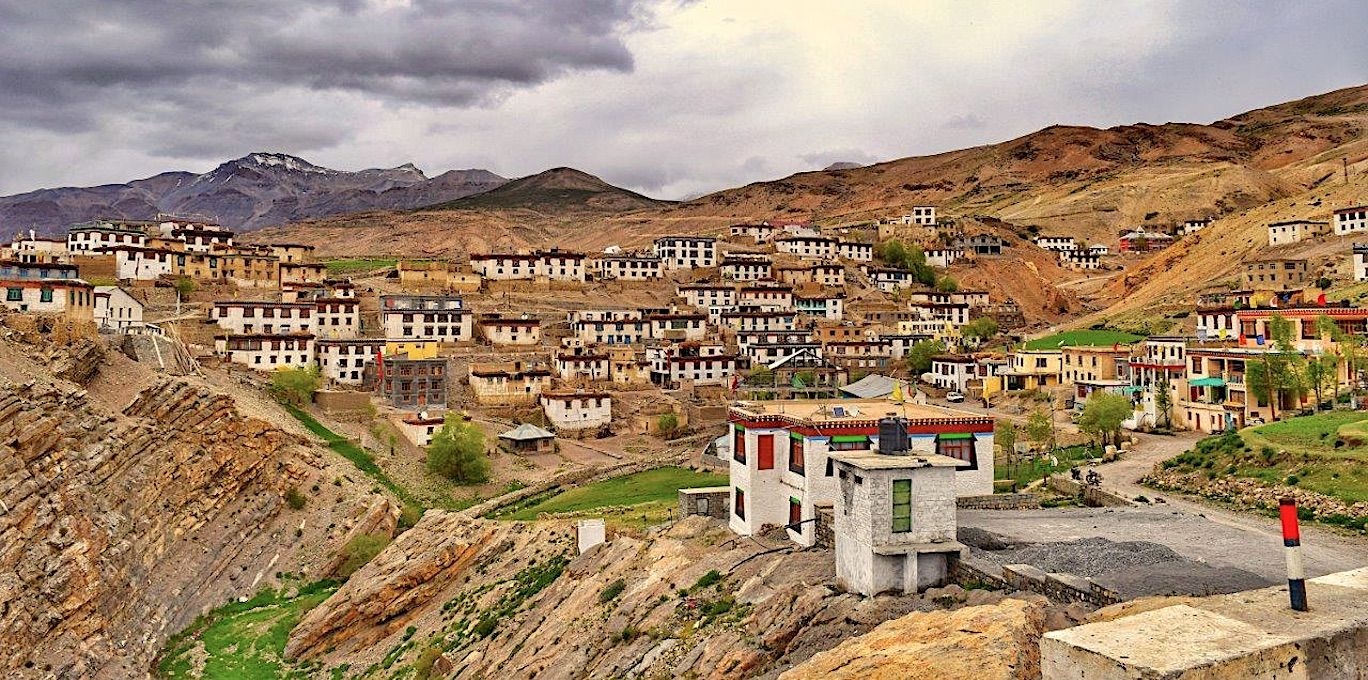
Adventure Beyond Boundaries: Trekking Trails Around Kibber
Kibber to Key Monastery Trek: A Journey Through Time
For trekkers, the Kibber to Key Monastery Trek is a dream come true. This moderate-level trail takes you through some of the most stunning alpine meadows and dense forests in the region. Along the way, you’ll encounter diverse flora and fauna, including rare species like the snow leopard and ibex.
Key Monastery, one of the largest and oldest monasteries in Spiti, serves as the perfect endpoint for this trek. The view of the surrounding mountains and valleys from the monastery is breathtaking, offering panoramic vistas that leave you humbled and inspired.
Pin Valley National Park: A Wilderness Paradise
Another popular trek near Kibber is the Pin Valley National Park Trek , which takes you to a protected area known for its biodiversity. The trail passes through dense forests, alpine meadows, and high-altitude passes, offering diverse flora and fauna, including rare species like the snow leopard and ibex.
Camping in the wilderness of Pin Valley under a blanket of stars is an experience that words fail to describe adequately. The silence of the mountains and the vastness of the landscape leave you humbled and inspired.

Chandra Taal Lake Trek: A Journey Through Time
The Chandra Taal Lake Trek from Kibber is another must-do adventure. Known as the "Moon Lake," Chandra Taal offers breathtaking views and serene surroundings, making it a favorite among photographers and nature lovers.
The trek involves crossing high-altitude passes like Kunzum La, where you can enjoy panoramic views of the surrounding peaks. Camping by the lake under a starlit sky is an unforgettable experience that leaves you feeling connected to nature.
Practical Tips for Travelers: Making the Most of Your Visit
Best Time to Visit Kibber
The ideal time to explore Kibber depends on your preferences and tolerance for varying weather conditions. Summer (May to September) is undoubtedly the best season for first-time visitors, as the weather remains pleasant, and all trekking routes are accessible. Autumn (October) is another excellent time, offering clear skies and stunning fall colors.
Winter (November to April) transforms Kibber into a snowy wonderland, attracting adventurous souls willing to brave sub-zero temperatures. However, note that road access may be limited due to heavy snowfall, and accommodations might be scarce.
How to Reach Kibber
Reaching Kibber requires careful planning, especially if you’re traveling from major cities like Delhi or Manali. The nearest airport is Bhuntar (Kullu), approximately 350 kilometers away. From there, you can hire a taxi or take a shared cab to Kibber via Rohtang Pass and Kunzum La.
Alternatively, you can opt for a train journey to Shimla followed by a scenic drive through the Sutlej Valley. While public transport options exist, hiring a private vehicle ensures greater flexibility and comfort.

Accommodation Options in Kibber
Kibber offers a range of accommodation choices catering to different budgets. Homestays run by local families provide an authentic experience, allowing you to interact closely with the villagers. For those seeking luxury, boutique hotels and eco-friendly resorts offer modern amenities without compromising on the rustic charm.
Camping is another popular option, with several operators organizing tented stays near the fossil beds or under the stars. Imagine falling asleep to the sound of silence and waking up to the sight of snow-capped peaks—it doesn’t get better than this!
Essential Packing List
To ensure a smooth and enjoyable trip, pack wisely based on the season and activities planned. Some must-haves include:
- Warm clothing (jackets, thermals, gloves, and woolen caps)
- Sturdy trekking shoes
- Sunglasses and sunscreen
- First-aid kit
- Camera for capturing memories
- Reusable water bottle
Why Kibber Should Be on Every Traveler’s Bucket List
In today’s fast-paced world, finding a place that offers peace, simplicity, and raw natural beauty is becoming increasingly rare. Kibber checks all these boxes and more. It’s a destination that invites you to slow down, breathe deeply, and reconnect with what truly matters.
From its enchanting landscapes and rich cultural heritage to thrilling trekking trails and warm hospitality, Kibber has something for everyone. Whether you’re embarking on a solo adventure, planning a romantic getaway, or traveling with family, this hidden gem promises experiences that will stay with you forever.
So why wait? Start planning your journey to Kibber today and discover the magic of the Himalayas firsthand. Share this guide with fellow travelers and inspire them to explore one of India’s most underrated treasures.

Frequenlty Asked Question FAQ About Kibber
Where is Kibber located and why is it famous?
Kibber is a high-altitude village in Spiti Valley, Himachal Pradesh, situated at 4,270 meters (14,010 ft). It holds the distinction of being one of the world’s highest motorable villages and is known for its stunning landscapes, wildlife (snow leopards in winter), and ancient monastery.
What is the best time to visit Kibber?
The ideal time is June to September when temperatures range between 5°C to 15°C, and roads are accessible. October to May brings extreme cold (-20°C to -30°C) and heavy snowfall, making travel difficult.
Do I need a permit to visit Kibber?
Indian citizens do not require a permit, but foreign nationals need a Protected Area Permit (PAP) for Spiti Valley, obtainable in Shimla or Reckong Peo.
How do I reach Kibber from Kaza?
Kibber is 18 km from Kaza (45-60 minutes by road). Shared taxis and private vehicles are available. The route offers breathtaking views of the Spiti Valley.
What are the must-visit attractions in Kibber?
-
Kibber Monastery – A serene 16th-century Buddhist monastery
-
Kibber Wildlife Sanctuary – Home to snow leopards, ibex, and blue sheep (best in winter)
-
Chicham Bridge – One of Asia’s highest suspension bridges
-
Stargazing – Kibber’s clear skies offer unmatched views of the Milky Way
Is there mobile network or internet in Kibber?
BSNL works occasionally, while other networks have no coverage. There is no reliable internet, making Kibber perfect for a digital detox.
Are there accommodation options in Kibber?
Yes! Kibber has homestays (₹800-1,500/night) and a few guesthouses. Most travelers stay in Kaza and visit Kibber as a day trip.
Can I visit Kibber in winter?
Only for adventure seekers—December to March brings extreme cold (-25°C to -35°C) and road closures. However, winter is the best time for snow leopard sightings.
Is Kibber safe for solo travelers?
Yes, but due to the remote location and high altitude, it’s advisable to:
-
Travel in daylight
-
Stay hydrated to avoid altitude sickness
-
Inform someone about your travel plans
What should I pack for Kibber?
-
Warm layers (thermal wear, down jacket, gloves)
-
Sturdy shoes (for rocky terrain)
-
Sunglasses & sunscreen (high UV exposure)
-
Cash (no ATMs or card payments)
-
Power bank (frequent power cuts)
